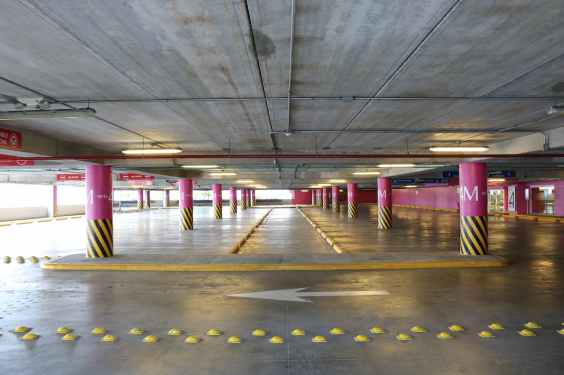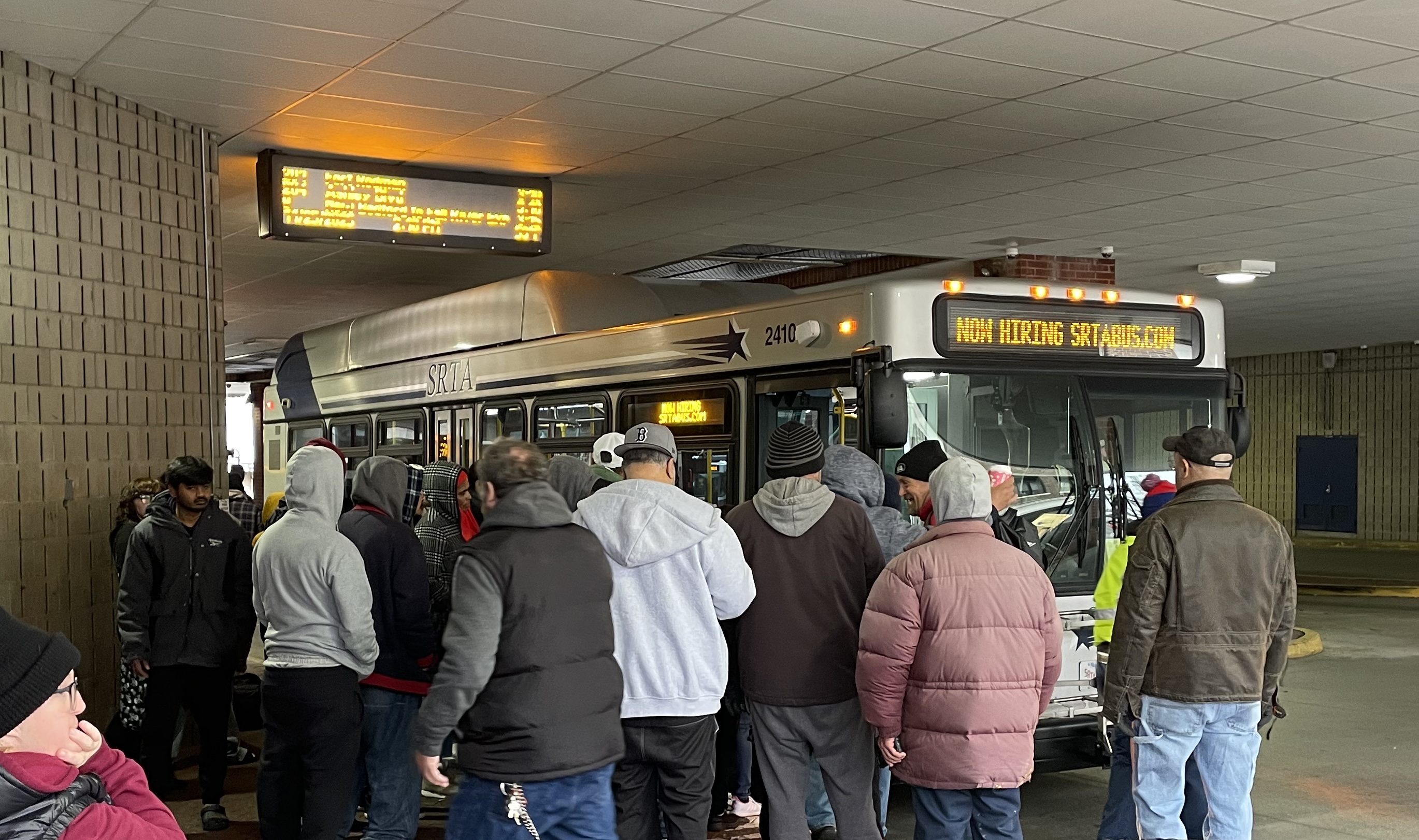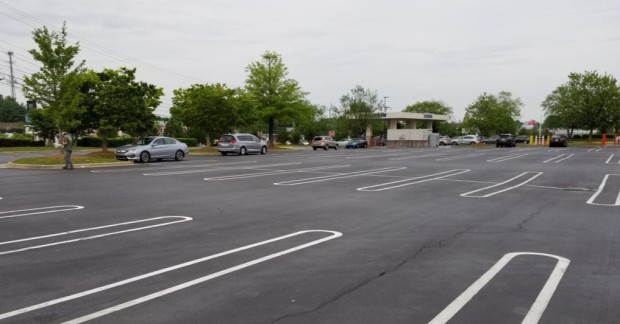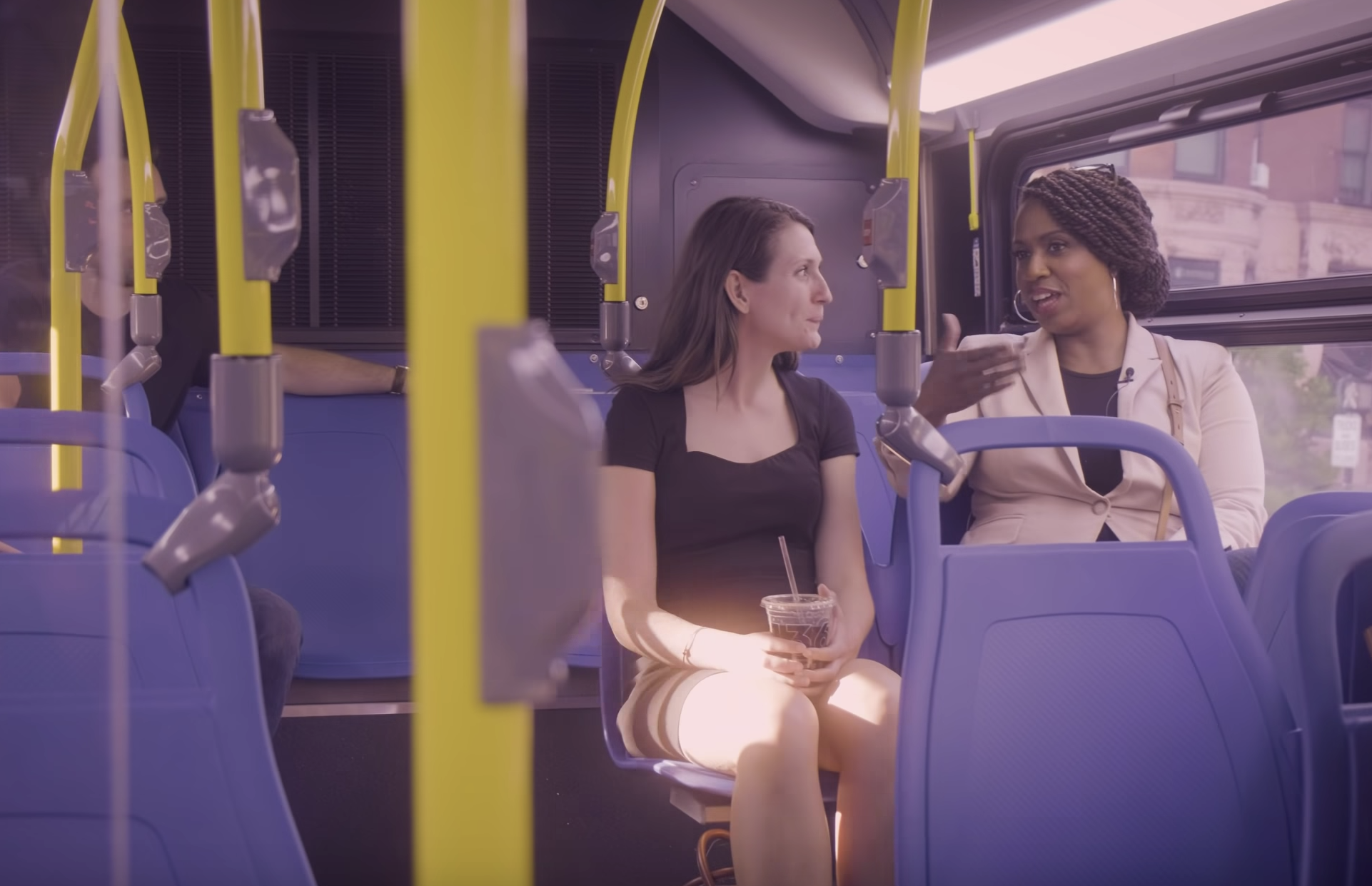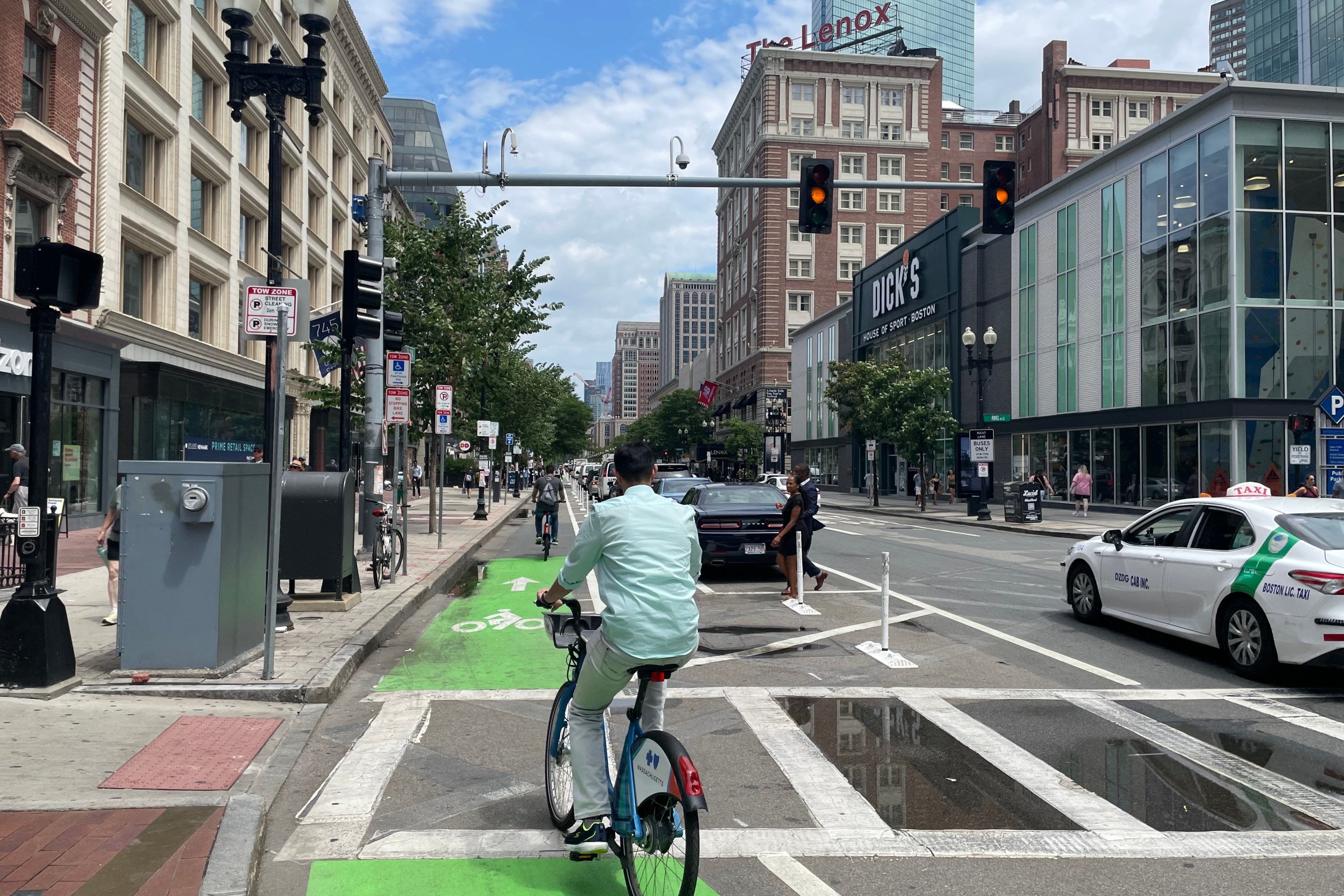Thanks to decades of planning decisions that routed highways through Asian, Black and Latinx neighborhoods, and a lack of affordable housing in transit-accessible locations, air pollution from tailpipes is significantly more likely to harm communities of color across Massachusetts, according to a new study from the Union of Concerned Scientists.
In the new report, Inequitable Exposure to Air Pollution from Vehicles in Massachusetts, researchers modeled ground-level concentrations of tailpipe pollution particles smaller than 2.5 micrometers in diameter, or PM2.5, and cross-referenced those estimates with neighborhood-level Census estimates of population density for various racial groups.
While many advocates and policymakers focus on violent traffic deaths from crashes, the barely-visible particulate pollution from car and truck tailpipes may be even more deadly. Short-term exposure to these pollutants can trigger asthma attacks and heart attacks among people with cardiovascular diseases, and doctors estimate that these pollutants are responsible for about 4.2 million premature deaths each year worldwide.
The study’s models estimated that the neighborhood with the state’s worst concentrations of tailpipe pollution is Boston’s Chinatown, home to chronically-congested entrances to the O’Neill tunnel. Asian residents are also more densely concentrated along I-93 south of the city in Dorchester and Quincy and along the Massachusetts Turnpike in Allston.
The report estimates that Asian residents of Massachusetts generally breathe in 36 percent more PM2.5 pollution from traffic than the typical white Massachusetts resident; African American residents breathe about 34 percent more pollution, and Latinx resident breathe 26 percent more.
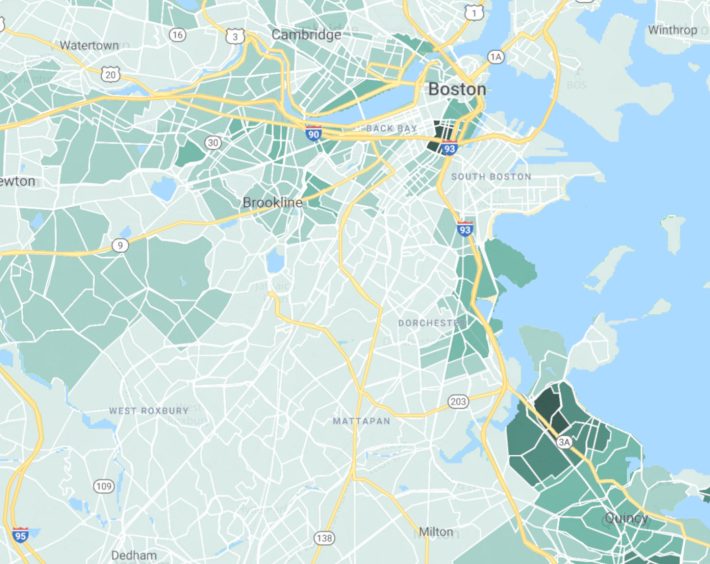
Meanwhile, Black residents of the metropolitan area are most concentrated around busy multi-lane arterials like Columbus Avenue, Morton Street and Blue Hill Avenue, and are more isolated from the city's rapid transit lines:
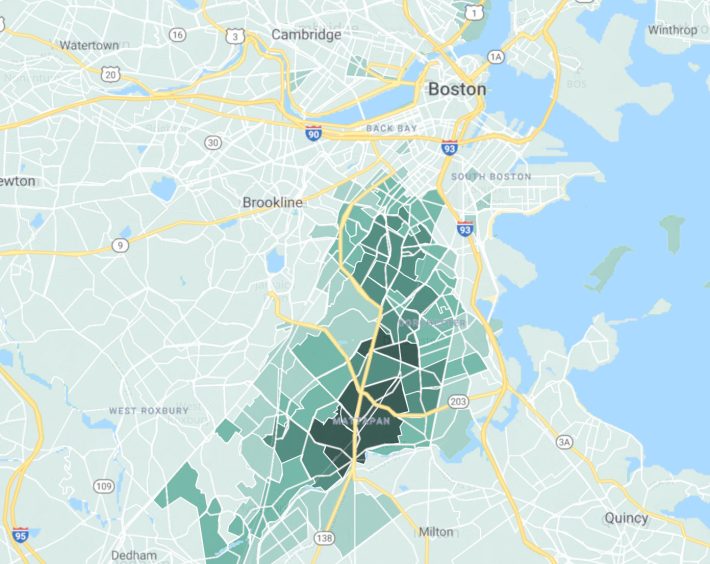
At a press conference for the report's release on Thursday afternoon, politicians and social justice advocates gathered to speak at a podium on the basketball courts of the Josiah Quincy Upper School while heavy traffic plodded through a mid-day traffic jam on the I-93 viaducts behind them.
Karen Chen, executive director of the Chinese Progressive Association, reminded the assembled audience that the pollution problem in her community is linked to residents' housing concerns.
"In this community, even though we're surrounded by highways, that's not the number-one issue in the mind of residents," said Chen. "What's in the mind of residents are the housing issues," and the struggles of paying for rising rents. With limited housing opportunities elsewhere in the city and a lack of supportive social networks for people of color in majority-white neighborhoods, simply moving away from deadly highway pollution isn't a realistic option.
Boston City Councilor Michelle Wu expanded on that idea during her time at the podium, reminding everyone that these highways were often deliberately routed through areas where people of color lived, condemning their businesses and destroying their real estate wealth in order to subsidize the growth of (mostly white) suburban areas.
"We know that transportation is often the first way that communities are segregated. It determines which communities are passed by and overlooked, and which communities have access to opportunity," said Wu. "This report reminds us that the harm doesn't just end when that highway gets built without neighbors' input or in spite of their opposition; the harm continues because it is these communities, which have contributed the least to the problem, that now absorb the impacts disproportionately."
The politicians and advocates offered a range of ideas, from ambitious, wide-ranging ideas like congestion pricing, to specific, neighborhood-scale measures like installing better ventilation and tighter building envelopes for Chinatown's mid-century apartment blocks. While there were calls for more electric vehicles, speakers also acknowledged that that technology has been slow to catch on, and that transit improvements can benefit far more people more quickly.
One of the core principles of the "Vision Zero" concept, which the City of Boston has adopted, is that "human life takes priority over mobility and other objectives of the road system."
Compared to violent traffic crashes, tailpipe pollution is harder to see and less of a spectacle, and thus easier to ignore. But among these high-exposure neighborhoods like Chinatown, long-term exposure to traffic pollution may be just as dangerous as reckless and distracted drivers. If the city and state take "Vision Zero" principles seriously, reducing the number of tailpipes that are choking the city's air deserves to be a top priority for transportation planners.

